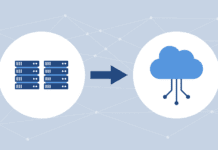Data storage backup has evolved considerably over the last two decades. Tape once prevailed with organizations running full backups either every night or each week. Tape cartridge after tape cartridge would be shipped off site for that rainy day they hoped would never come.
Then someone realized that full backups were mostly repeats of data previously backed up. So incrementals became popular – only backup new or changed data. That gave rise to the next logical extension – use deduplication to store one complete set of organizational data on disk (though many also kept additional tape copies offsite).
As time has gone on, many shouted, “tape is dead.” Now some insist backup is dead. They claim it’s a dated technology, which can be replaced by such things as snapshots and replication.
So, does backup have a future? And if so, what is it? What role will backup play in the enterprise, where is it irreplaceable?
“Backup has evolved greatly from the days when we used to just copy data to a tape and send the tape off to a vault,” said David King, Director of Solutions Marketing, Commvault.
1) Recovery Dominance
Back in the day, backup was almost an end all in itself. Organizations felt secure that their data was safe if they could point to hundreds of tapes gathering dust in a storage room, or wave at the Iron Mountain truck as it took their latest tapes to a vault. But in the rare moments when those tapes had to be recalled due to a disaster or data loss, trouble was often apparent.
The problems were many. Tapes would be missing, files corrupted, or admins found that backup jobs had never completed. Alternatively, backup admins had to sift through tape after tape looking for that one file the boss had misplaced. The realization was simple – why backup if you can’t restore and recover.
“It’s not about backup, it’s about the ability to recover systems and data in a way that meets IT and business requirements,” said Christophe Bertrand, Vice President of Product Marketing at Arcserve. “What is happening now is an acceleration of techniques and solutions that mitigate or eliminate the consequences of data interruptions.”
Arcserve, for example, has honed its technology investments on unifying core data protection and disaster recovery technologies under a single pane of glass, whether the data exists on premise or in the cloud. Other vendors are taking a similar approach.
2) Retention
Backups also shine for long term data retention, said Linus Chang, CEO of BackupAssist. Many records need to be kept for five or seven years. The easiest way to do that is by putting a backup on the shelf, and paying zero in hosting fees. No snapshot or replica will suffice, he added.
3) Backup is Dead, Long Live Backup
Maybe backup did die – at least the old way of doing it. But the fundamentals of the technology continue to apply although it has evolved considerably. How data is protected has changed and will continue to change over time.
“Often when people say, ‘backup is dead,’ they are referring to the original method of streaming an entire data source bit-by-bit from its original location to a secondary storage location,” said Dan O’Farrell, senior director of solutions marketing, Veritas. “This method is antiquated and fewer backups are done that way anymore. Incremental backups are much more efficient, identifying changed blocks and synthesizing complete backups by combining these changed blocks with previous backup copies.”
4) 3-2-1 Rule Applies
Speaking of fundamentals, O’Farrell advised users to continue to adhere to the time-honored basics of backup. In particular, he emphasized the old 3-2-1 rule that has been around for years. Three copies of data on at least two types of media, one of which should be offsite.
“The basic principle of backup is keeping multiple copies of important data in multiple places to avoid having that data lost or destroyed,” he said. “While this principle will never change, the methods for doing this will continue to evolve and advance, making data backups more efficient and less costly over time.”
5) Tape Backup
Even tape backup and archiving continues to thrive. Charles King, and analyst at Pund-IT said that tape technologies have been under a death-watch since 2002 when EMC introduced its Centera platform, the industry’s first HDD-based solution for data archiving, long a tape bastion.
“Hang around the IT industry long enough and you notice that rumors of the impending demise of some product or class of products are always making the rounds,” said King. “They’re generally wrong. Despite surviving well beyond competitors’ hopes and expectations, tape storage also continues to evolve as evidenced by the new generation LTO-8 offerings just announced by IBM.”
Take the case of IBM’s new Linear Tape Open Ultrium 8 Tape drive (LTO-8). It doubles data capacity from previous generation LTO solutions, shortens data access times by 20 percent and drives media costs below the half-cent per GB barrier. It will be available later this quarter, but storage vendors such as Spectra Logic are already announcing products. It will ship LTO-8 tape drives and media with Spectra’s entire line of tape libraries
“LTO tape is the only data storage technology that has five more generations of double capacity growth in its future,” said Nathan Thompson, Spectra Logic CEO and Founder. “Spectra foresees the availability of LTO-12 at 190+ TB in eight to nine years. No other commercial data storage technology available now or on the horizon, will keep pace with or fulfill the world’s increasing demand for cost-effective, long-term data storage like tape technology.”
But this is only one example of tape technology innovation. There are many other areas besides. A recent Tape Storage Council report estimates that tape data rates are expected to be as much as 5X faster than hard disk drives (HDDs) by 2025.
6) Backup and Archiving
Backup tools, these days, are often combined with archiving functions. Organizational data typically consists of roughly 15-30% active data and the rest is cold data. This is where the archive comes in: move the less active data to a lower cost tier and use a variety of backup methods to protect your critical data.
“The archival data is usually kept with a number of copies, and critical data is backed up,” said Eric Polet, emerging markets manager, Spectra Logic. “Since many backup packages have a charge by capacity, this drastically lowers the amount of data that is being backed up.”
7) Semper Fi, Backup
Some forms of backup are probably going away. Full backups to tape every night or every week are one example. Similarly, point solutions that only virtual or the cloud, or on-prem storage are fading into yesteryear. Users want a full platform that does everything from one console no matter where their data lives.
“Backup will never become obsolete, it simply will evolve and change to easier facilitate organizations and provide better and faster storage and recovery,” said David King, Director of Solutions Marketing, Commvault.
This is a view shared by Frank Jablonksi, Vice President of Global Marketing at Acronis.
“Backup is an irreplaceable function today and into the foreseeable future as data becomes more valuable to the life of a business and to our personal lives,” he said. “Attacks on our data will only get worse, our volumes of data will only get larger, and the value of that data to our business and our lives will only grow in importance. Back it up.”





